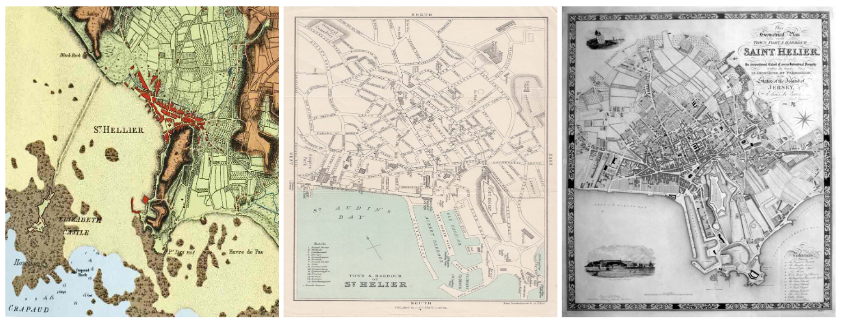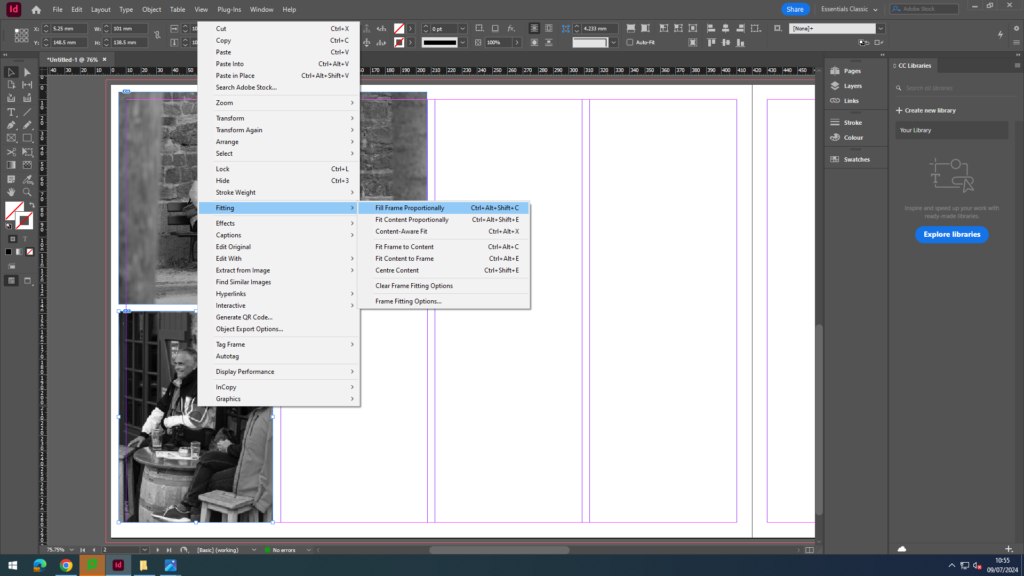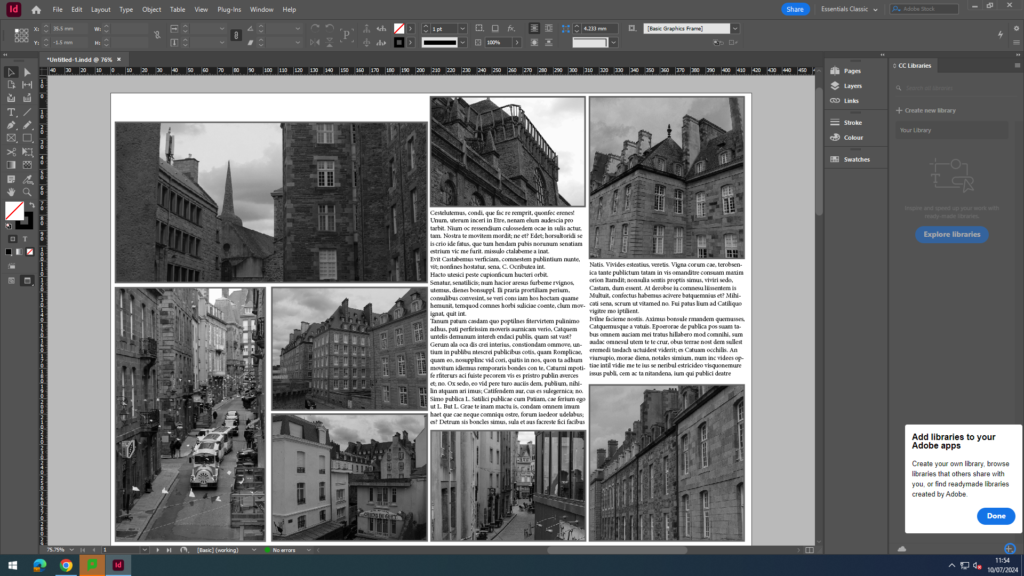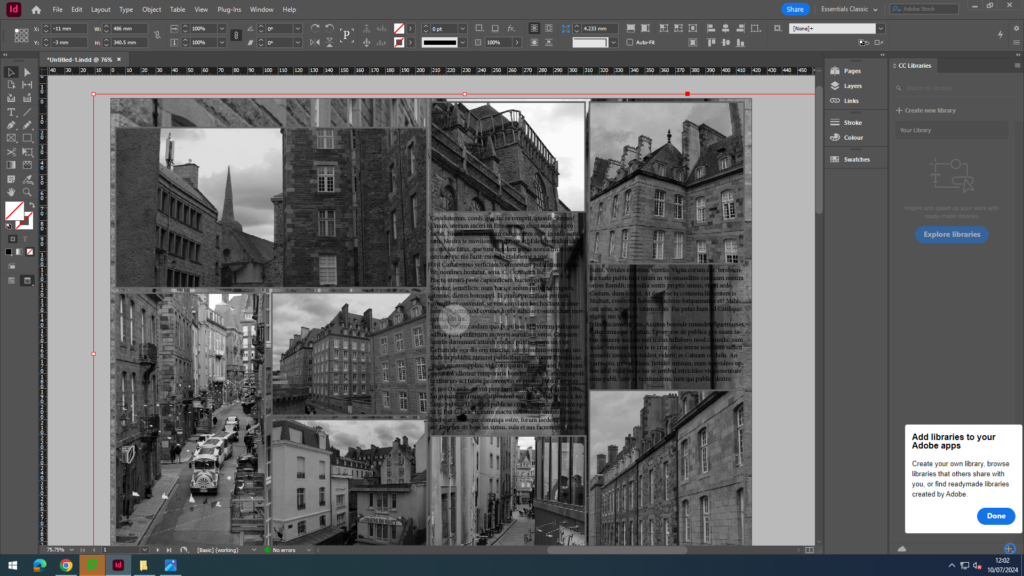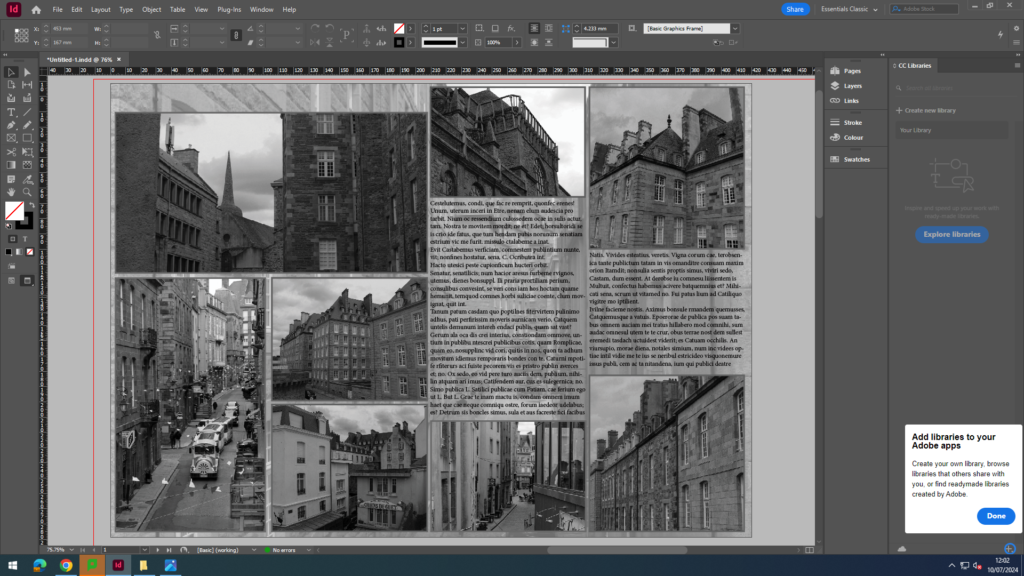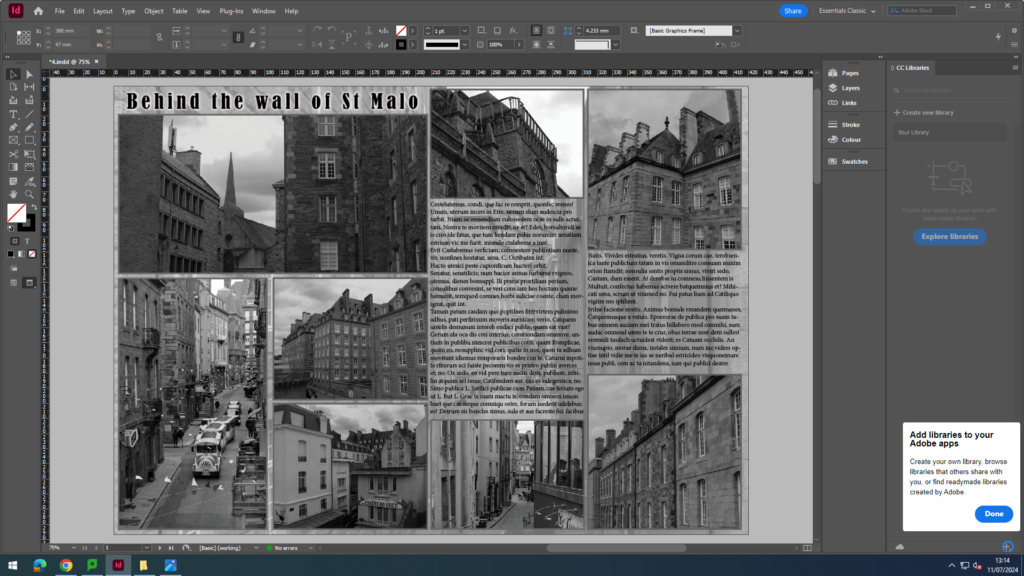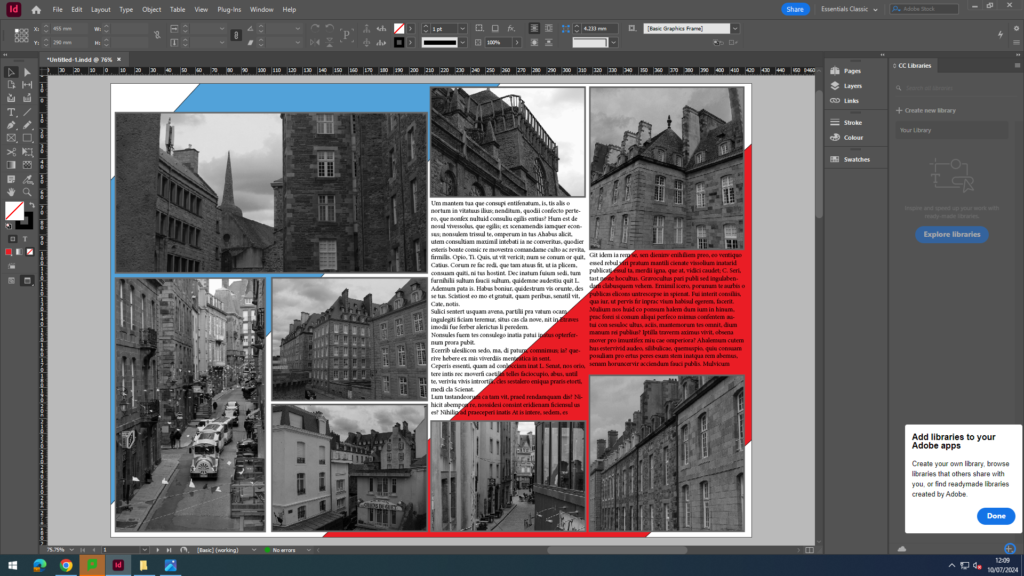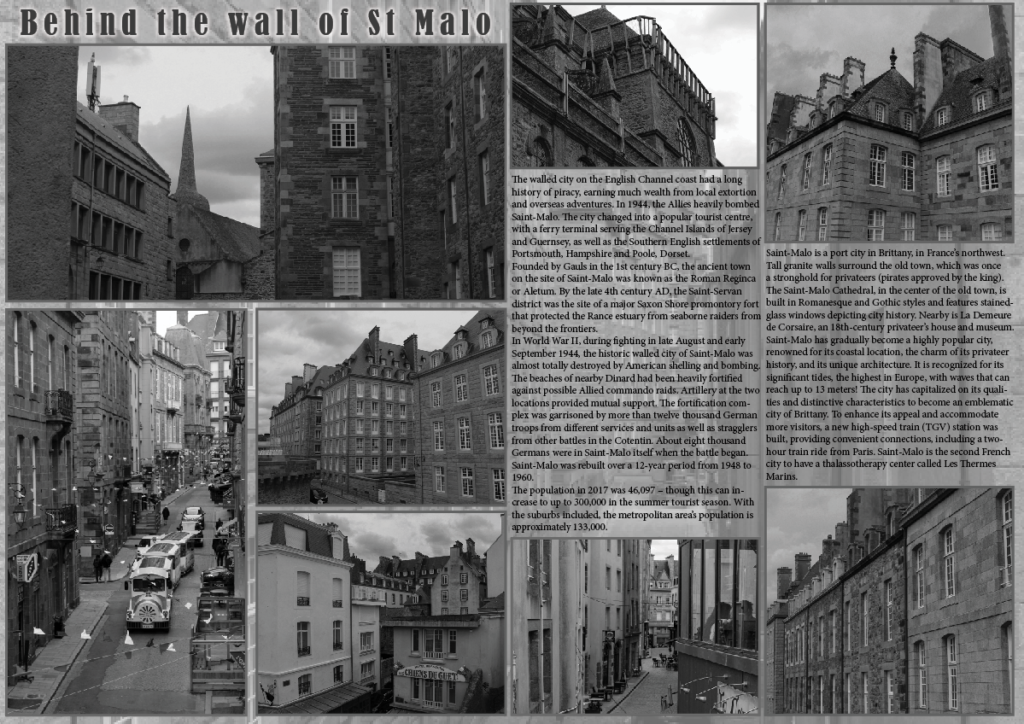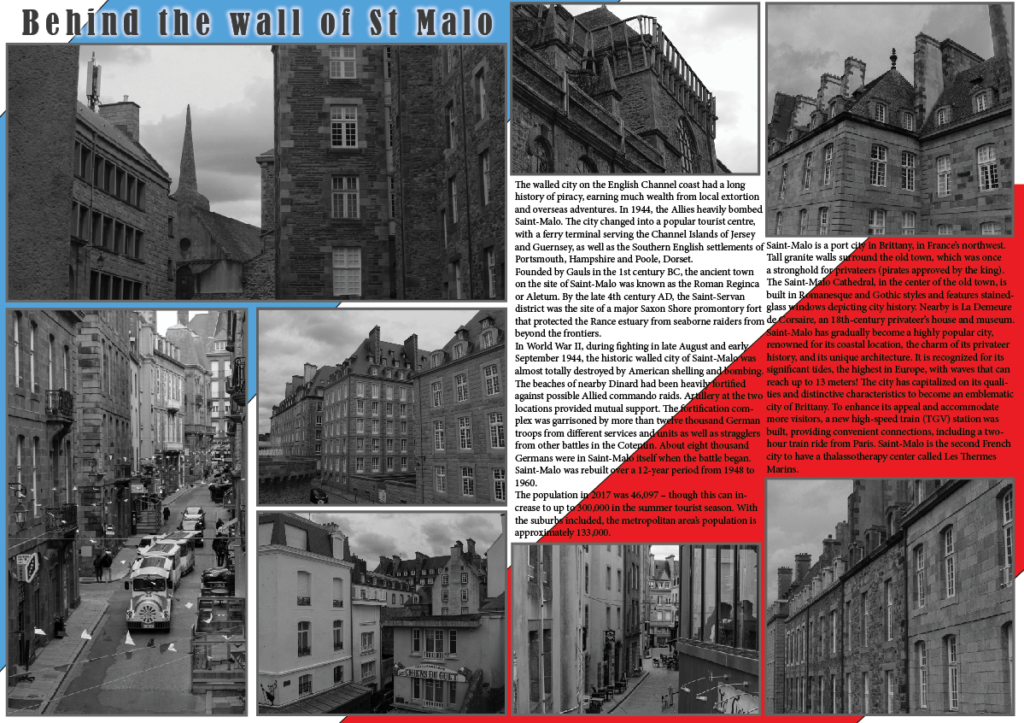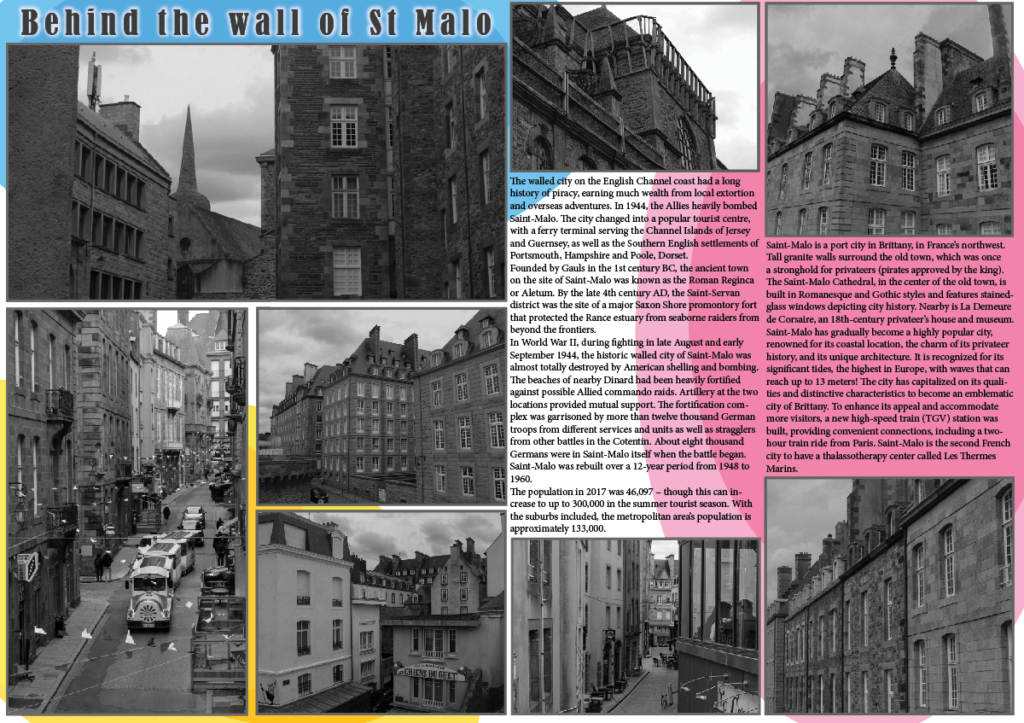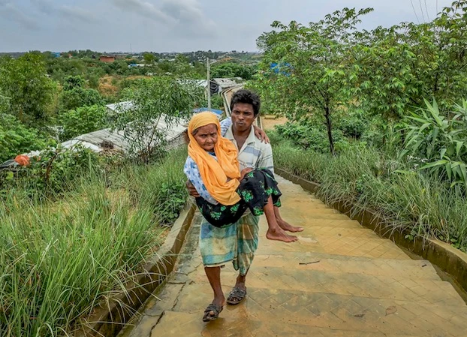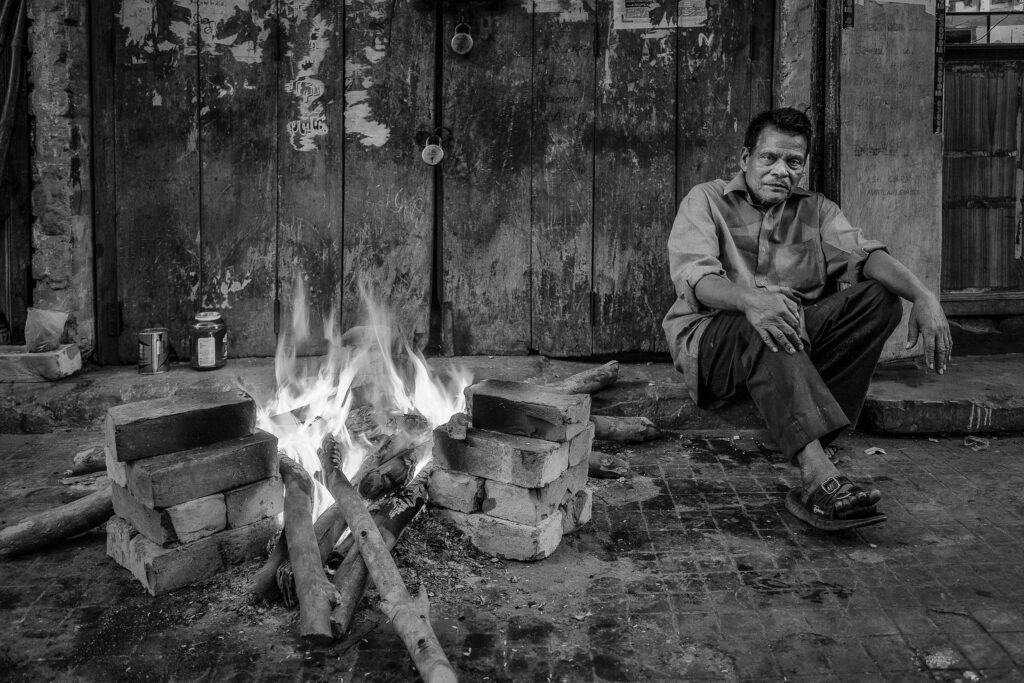Camera obscura and pinhole photography
A pinhole camera is a simple camera without a lens but with a tiny aperture (the pinhole). Light from a scene passes through the aperture and projects an inverted image on the opposite side of the box, which is known as the camera obscura effect. The size of the images depends on the distance between the object and the pinhole.

A camera obscura is a dark room with a small hole in one wall. When it’s bright outside, light enters through the hole and projects an upside down image of the outside world onto the wall opposite the hole. This was before 1839 (which is when photography was thought to be invented). Its appears upside down as light travels in straight lines.
A simple camera obscura can be made with a box that contains an opening on one side where light can pass through. When light passes through the opening, an image is then reproduced upside down on an opposite surface.
Nicephore Niepce and Heliography
Joseph Nicéphore Niépce was a French inventor and one of the earliest pioneers of photography. Niépce developed heliography, a technique he used to create the world’s oldest surviving products of a photographic process. In 1826, Niépce used his heliography process to capture the first photograph, but his pioneering work was soon to be overshadowed by the invention of the daguerreotype.

Heliography is an early photographic process producing a photoengraving on a metal plate coated with an asphalt preparation. Nicéphore Niépce began experiments with the aim of achieving a photo-etched printmaking technique in 1811. To make the heliograph, Niépce dissolved light-sensitive bitumen in oil of lavender and applied a thin coating over a polished pewter plate. He inserted the plate into a camera obscura and positioned it near a window in his second-story workroom.
By 1822 he had made the first light-resistant heliographic copy of an engraving, made without a lens by placing the print in contact with the light-sensitive plate. In 1826 he increasingly used pewter plates because their reflective surface made the image more clearly visible.
Louis Daguerre and Daguerreotype
Louis-Jacques-Mandé Daguerre was a French artist and photographer, recognised for his invention of the daguerreotype process of photography. He became known as one of the fathers of photography. The daguerreotype process made it possible to capture the image seen inside a camera obscura and preserve it as an object. It was the first practical photographic process and ushered in a new age of pictorial possibility.
After Niépce’s death, Daguerre alone kept on researching how to take images and invented the daguerreotype, a photographic process which was easier to put into practice, since exposure times were only of a few minutes. The daguerreotype knew a huge success and made Daguerre world famous.

The Boulevard du Temple photograph of 1838 is an image of a Parisian streetscape and one of the earliest surviving daguerreotype plates produced by Louis Daguerre. Although the image seems to be of a deserted street, it is widely considered to be the first photograph to include an image of a human.
The daguerreotype was the first commercially successful photographic process (1839-1860) in the history of photography. Named after the inventor, Louis Jacques Mandé Daguerre, each daguerreotype is a unique image on a silvered copper plate. In contrast to photographic paper, a daguerreotype is not flexible and is rather heavy. The daguerreotype is accurate, detailed and sharp. It has a mirror-like surface and is very fragile.
To make the image, a daguerreotypist polished a sheet of silver-plated copper to a mirror finish; treated it with fumes that made its surface light-sensitive; exposed it in a camera for as long as was judged to be necessary, which could be as little as a few seconds for brightly sunlit subjects or much longer with less intense lighting; made the resulting latent image on it visible by fuming it with mercury vapor; removed its sensitivity to light by liquid chemical treatment; rinsed and dried it; and then sealed the easily marred result behind glass in a protective enclosure. This process produced positives (which means it’s a one off and copies can’t be created).
Henry Fox Talbot and Calotype
William Henry Fox Talbot was an English scientist, inventor, and photography pioneer who invented the salted paper and calotype processes, precursors to photographic processes of the later 19th and 20th centuries. In 1834 he discovered how to make and fix images through the action of light and chemistry on paper. These ‘negatives’ could be used to make multiple prints and this process revolutionised image making.
Calotype is an early photographic process introduced in 1841 by William Henry Fox Talbot, using paper coated with silver iodide. Paper texture effects in calotype photography limit the ability of this early process to record low contrast details and textures.

The original negative and positive process invented by William Henry Fox Talbot, the calotype is sometimes called a “Talbotype.” This process uses a paper negative to make a print with a softer, less sharp image than the daguerreotype, but because a negative is produced, it is possible to make multiple copies. The image is contained in the fabric of the paper rather than on the surface, so the paper fibers tend to show through on the prints. The process was superceded in the 1850s by the collodion glass negative. Because of Talbot’s patent rights, relatively few calotypes were made in the United States.
In this technique, a sheet of paper coated with silver chloride was exposed to light in a camera obscura; those areas hit by light became dark in tone, yielding a negative image.
Similarities between daguerreotype and calotype:
- -Both black and white
- -Both have links to romanticism (ie capturing loved ones in a photograph)
- -Both involve photographs being fixed onto a surface (eg metal or salt paper)
- -Both were invented in 1839 (they came out at similar times due to competition
Differences:
- -One is produced on salt paper whereas the other is on metal
- -The calotype process first produced a photographic ‘negative’ in the camera, from which many ‘positive’ calotype prints could be made, whereas daguerreotypes were a one-off image.
Robert Cornelius & self-portraiture
Robert Cornelius was an American photographer and pioneer in the history of photography. His daguerreotype self-portrait taken in 1839 is generally accepted as the first known photographic portrait of a person taken in the United States, and a very important achievement for self-portraiture. He operated some of the earliest photography studios in the United States between 1840 and 1842 and implemented innovative techniques to significantly reduce the exposure time required for portraits.

Robert Cornelius figured out how to take the first ever selfie by setting up a camera on legs, removing the lens cap, and running into the frame before quickly clamping the lens cap back on. By doing so, he captured a self-portrait of himself, which is considered the first ever selfie.
Julia Margaret Cameron & Pictorialism
Julia Margaret Cameron was 48 when she received her first camera, a gift from her daughter and son-in-law. When Cameron took up photography, it involved hard physical work using potentially hazardous materials. The wooden camera was large and cumbersome. She used the most common process at the time, producing albumen prints from wet collodion glass negatives. The process required a glass plate to be coated with photosensitive chemicals in a darkroom and exposed in the camera when still damp. The glass negative was then returned to the darkroom to be developed, washed and varnished. Prints were made by placing the negative directly on to sensitised photographic paper and exposing it to sunlight. Each step of the process offered room for mistakes: the fragile glass plate had to be perfectly clean to start with and kept free from dust throughout; it needed to be evenly coated and submerged at various stages; the chemical solutions had to be correctly and freshly prepared.
Within a month of receiving her camera, she made the photograph that she called her ‘first success’, a portrait of Annie Philpot, the daughter of a family staying in the Isle of Wight where Cameron lived.

From her ‘first success’ she moved on quickly to photographing family and friends. These early portraits reveal how she experimented with soft focus, dramatic lighting and close-up compositions, features that would become her signature style. However, she was criticised against because she included imperfections in her photographs – eg streaks, swirls and even fingerprints – that other photographers would have rejected as technical flaws.
Pictorialism is an approach to photography that emphasises beauty of subject matter, tonality, and composition rather than the documentation of reality.
Henry Mullins & Carte-de-Visite
Henry Mullins was the most prolific of the first generation of Jersey photographers in the mid-nineteenth century. He produced thousands of portraits of islanders between 1848 and 1873 at his highly successful studio in the prime location of the Royal Square, St Helier. As a commercial photographer he consistently embraced the rapid technical progress that ran in parallel with his career. While numerous photographic studios opened across the town of St Helier in the 1850s and 1860s, Henry Mullins continued to be the photographer of choice for leading members of Jersey society and successful local and immigrant families.

A carte de visite is a photograph mounted on a piece of card the size of a formal visiting card. The format was patented by the French photographer Andre Adolphe Eugene Disdéri in 1854. Most professional portrait photographers of the 1850s took either daguerreotypes or collodion positives.



